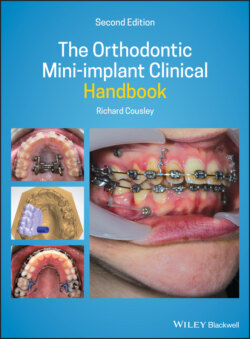Читать книгу The Orthodontic Mini-implant Clinical Handbook - Richard Cousley - Страница 27
1.14 Pain
ОглавлениеThere is often an expectation that high levels of pain will occur but the opposite is true, such that some patients appear to feel virtually no discomfort during and after insertion [57,58]. The majority of patients appear to experience mild pressure‐related pain at the time of insertion and up to 24 hours of low‐level pain thereafter. This is self‐limiting, controlled by simple analgesics (e.g. paracetamol or ibuprofen) and comparable (but of shorter duration) to other orthodontic experiences, such as the effects of separators and aligning archwires [59], and certainly much less than premolar tooth extractions [60]. The latter comparison is beneficial when it comes to explaining the likely pain experience to patients who already have a fixed appliance in situ.
Assuming that the superficial soft tissues have been adequately anaethetised, mini‐implant insertions cause dental pain because of the pressure wave generated by insertion of a rigid fixture into a confined bone space. While there are no pain receptors within the bone tissues, if the pressure dissipates further it will reach the periodontal tissues of adjacent teeth, and hence stimulate their periodontal pain receptors. The patient will feel this as dental pain in the affected tooth. Fortunately, I think that it's within the orthodontist's scope to proactively reduce the level of pressure discomfort by diverging the roots of adjacent teeth prior to insertion (as described in Chapter 5). This creates more interproximal space and hence a greater distance between the mini‐implant site and the adjacent periodontal pain receptors. While there is no clinical evidence to support (or refute) this hypothesis, my experience is that patients with increased interproximal spaces complain of less pain both at the time of insertion and afterwards.
When it comes to mini‐implant removal, local anaesthesia is usually not required and indeed, patients find that the injection sensation is worse than the actual discomfort of explantation [61]. An exception to this rule may occur when a mini‐implant is being removed from the anterior region where there has been some soft tissue overgrowth of the mini‐implant head, especially when it has been inserted in loose mucosa (Figure 1.5). For all removal procedures, it is essential that the mini‐implant is unwound the entire way out of the implant hole since any attempt to pull it out will result in soft tissue pain where the threads catch on the mucosa. In addition, the orthodontist should ensure that the screwdriver is fully engaged on the mini‐implant at the start of explantation, since premature disengagement during the removal process will cause pain because of the implant's mobility within the soft tissue envelope.
Figure 1.5 Overgrowth of the labial sulcular tissues caused by these mandibular mini‐implant insertions within loose mucosa in this orthognathic surgical case (a). Local anaesthetic infiltration injections were required for the hyperplastic tissue to be peeled off the implant heads for their removal (b).
The majority of patients appear to experience mild pressure‐related pain at the time of insertion.
